
Disease of the pericardium

The normal pericardial sac contains about 50 mL of fluid, similar to
lymph, which lubricates the surface of the heart .
The pericardium limits distension of the heart, contributes to the
haemodynamic interdependence of the ventricles, and acts as a barrier
to infection.
Nevertheless, congenital absence of the pericardium does not result in
significant clinical or functional limitations.

Acute pericarditis
This is due to an acute inflammatory process affecting the pericardium,
which may coexist with myocarditis.
Pathogenesis
A number of causes are recognised, but in some cases the cause is
unclear. All forms of pericarditis may produce a pericardial effusion that,
depending on the aetiology, may be fibrinous, serous, haemorrhagic or
purulent.
fibrinous exudate may eventually lead to varying degrees of adhesion
formation.
serous pericarditis often produces a large effusion of turbid, straw-coloured
fluid with a high protein content.
haemorrhagic effusion is often due to malignant disease, particularly
carcinoma of the breast or bronchus, and lymphoma.
Purulent pericarditis is rare and may occur as a complication of sepsis, by
direct spread from an intrathoracic infection, or from a penetrating injury.
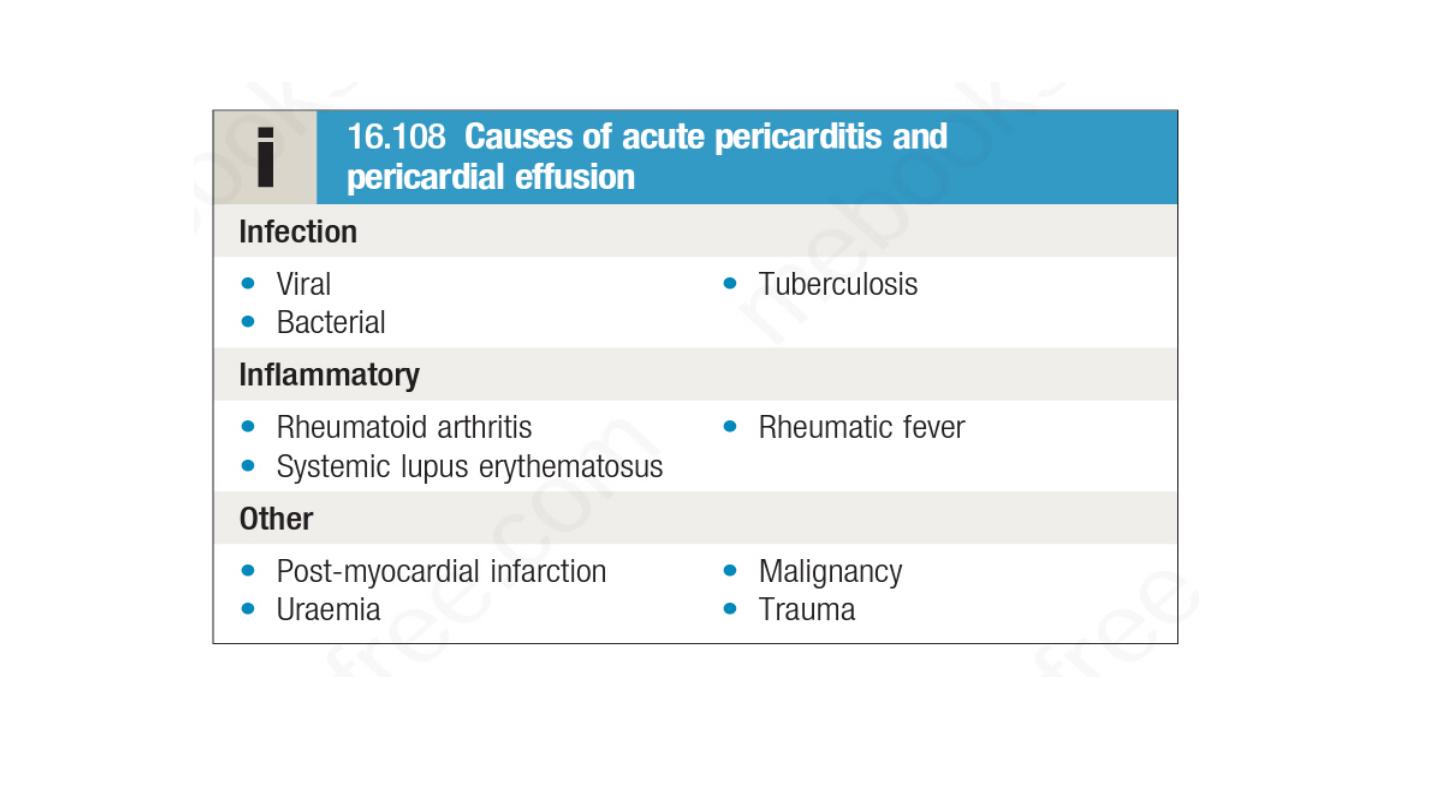

Clinical feature
Retrosternal chest pain
Low grade fever is common
Pericardial rub

Diagnosis
Clinical diagnosis
ECG
Echocardiography
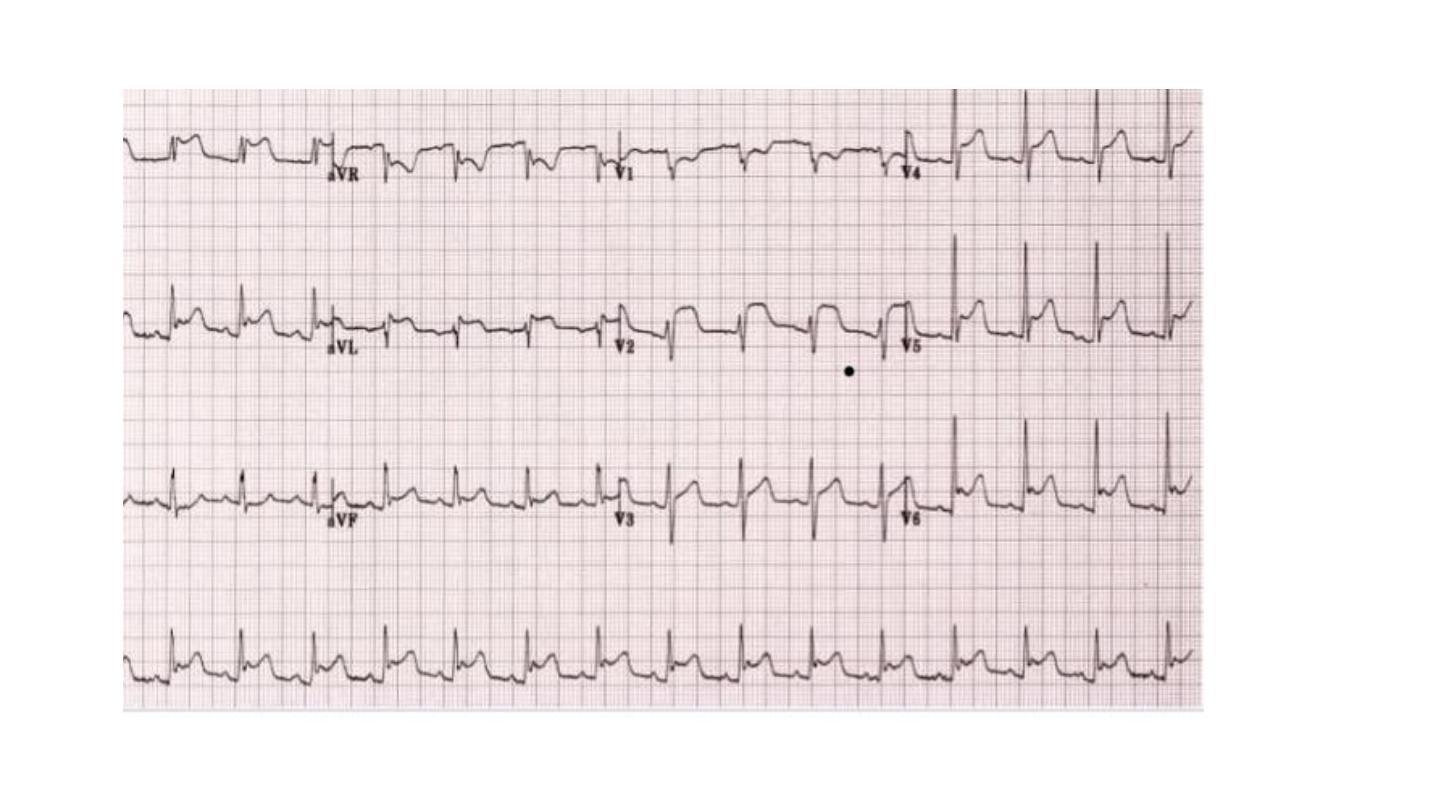

Management
Aspirin
NSAID
Colchicine and steroid
Viral pericarditis symptoms resolve within days or weeks
Purulent pericarditis require antibiotics, pericardiocentesis or surgical
drainage

Pericardial effusion
Pericardial effusion often accompanies pericarditis and can have a
number of causes,
Clinical features: the onset of an effusion the heart sounds may
become quieter, and a friction rub, if present, may diminish in
intensity but is not always abolished. Larger effusions may be
accompanied by a sensation of retrosternal oppression. While most
effusions do not have significant haemodynamic effects, large or
rapidly developing effusions may cause cardiac tamponade. This term
is used to describe acute heart failure due to compression of the
heart. Typical physical findings are a markedly raised JVP,
hypotension, pulsus paradoxus and oliguria.

Investigation
ECG
CXR
Echocardiography
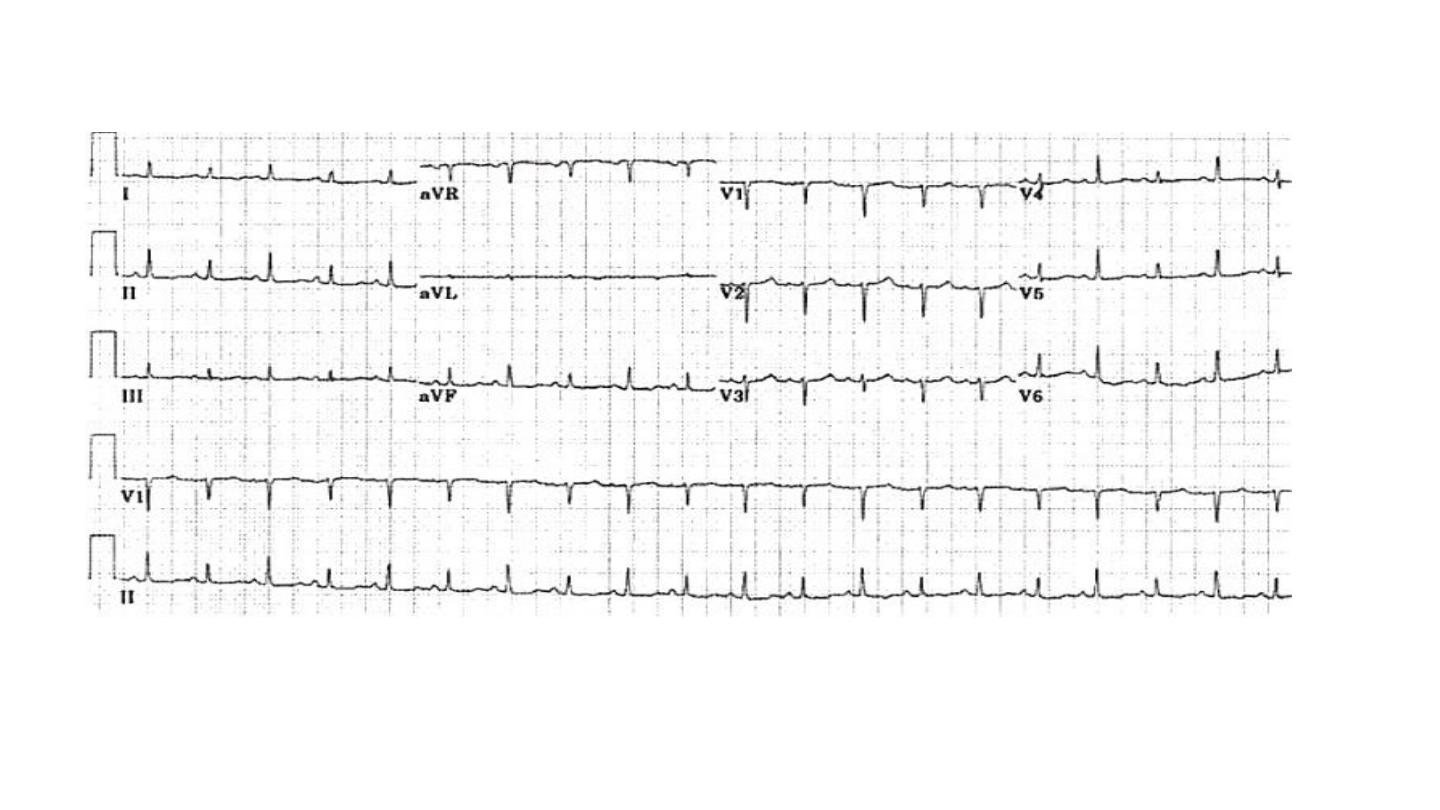

Management
Treat pericarditis
Aspiration
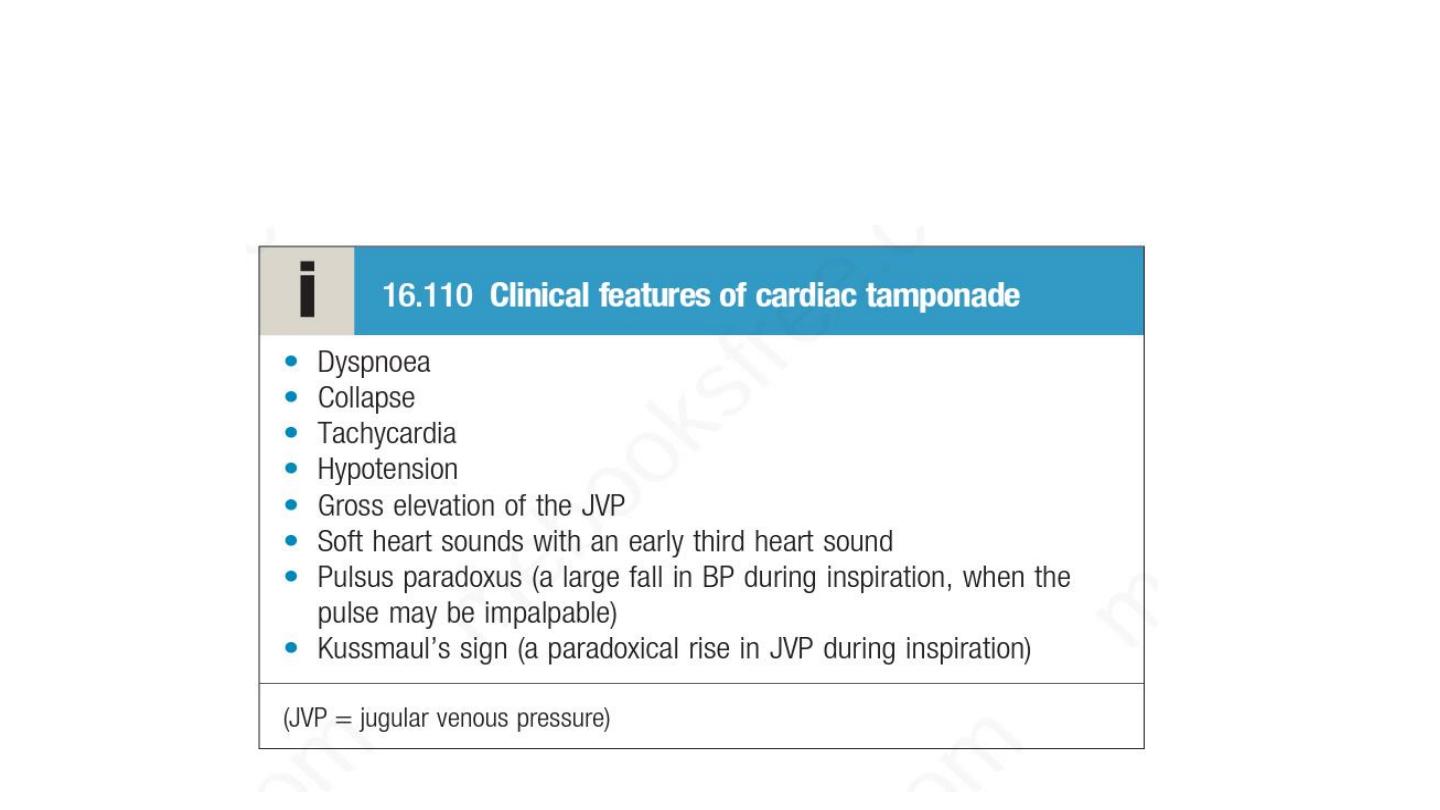
Cardiac tamponade
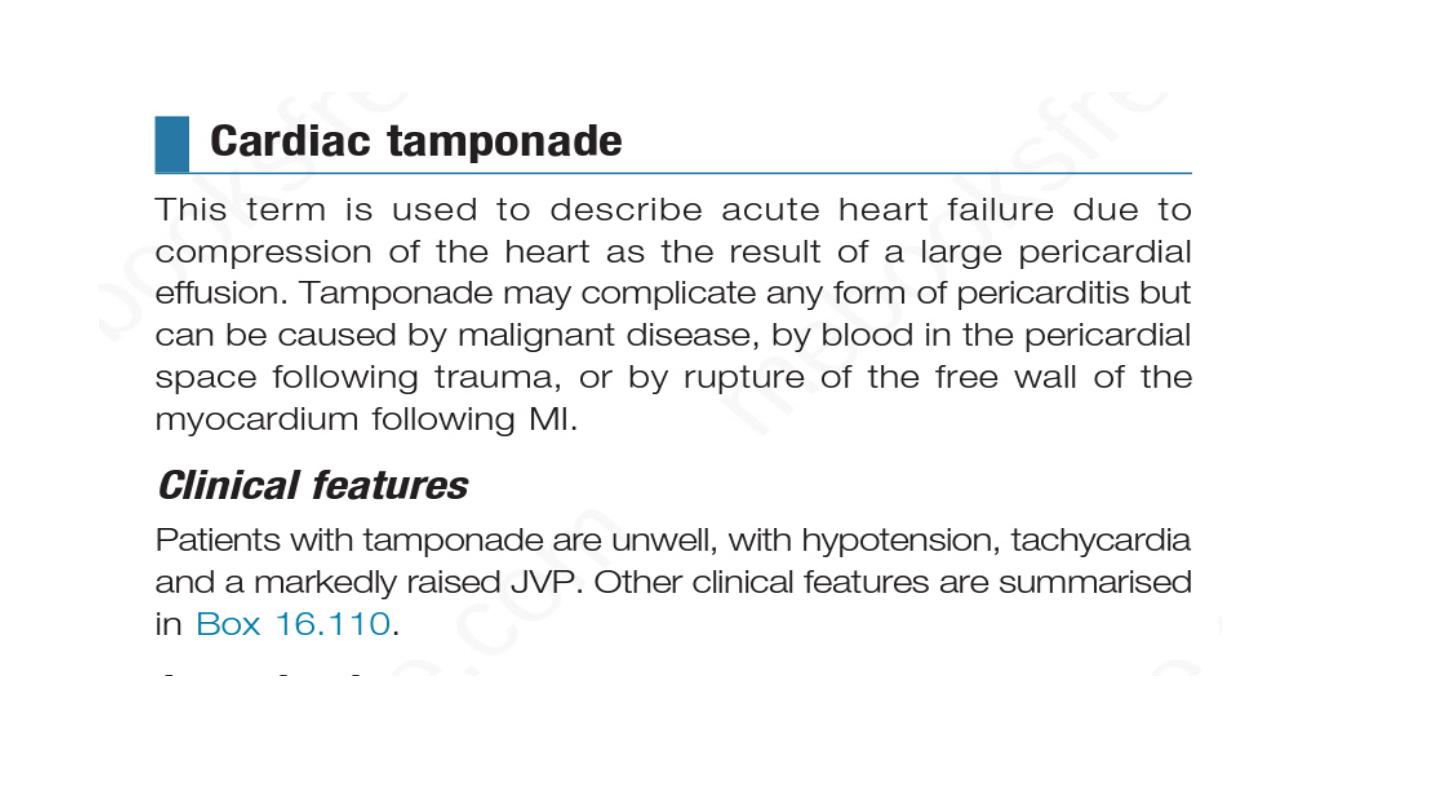
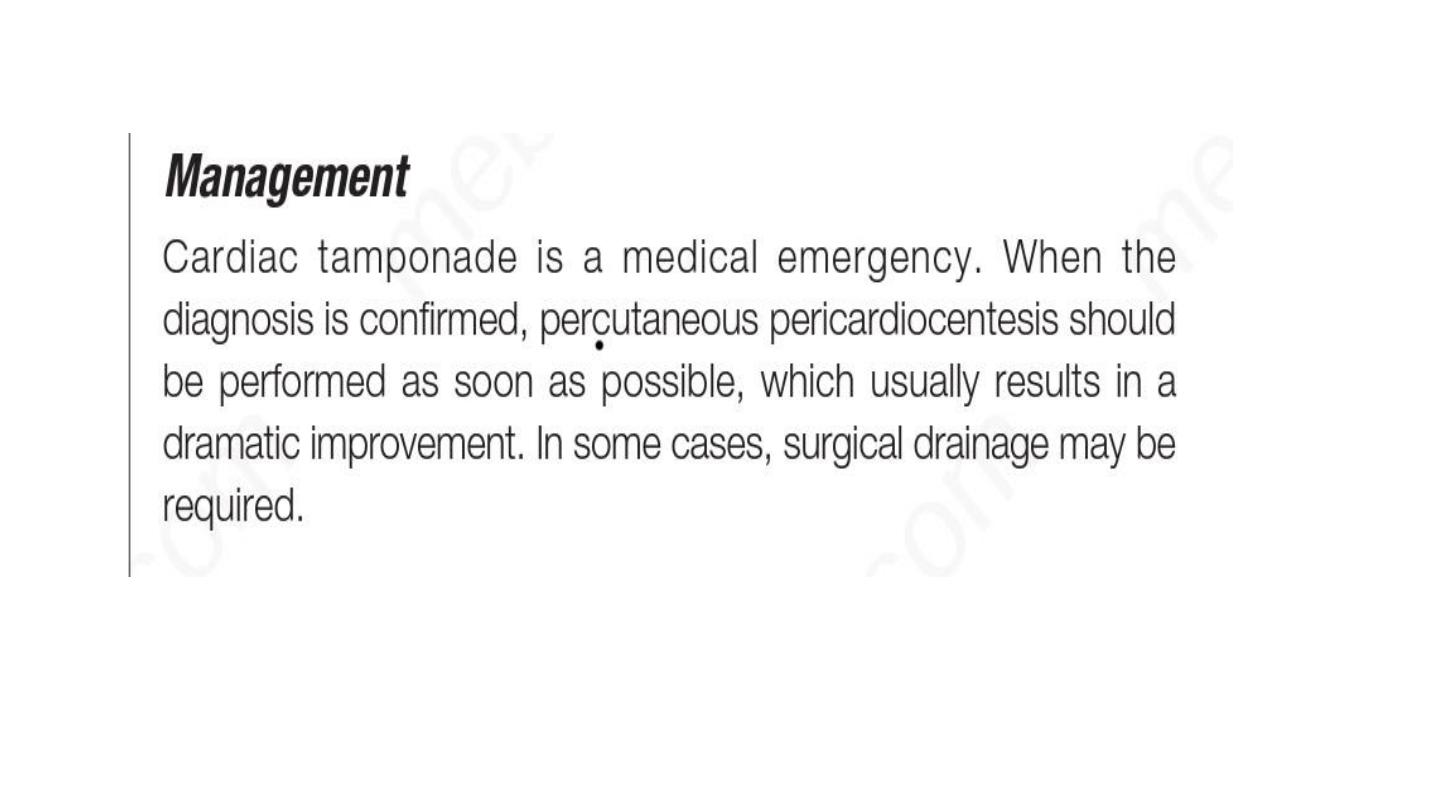
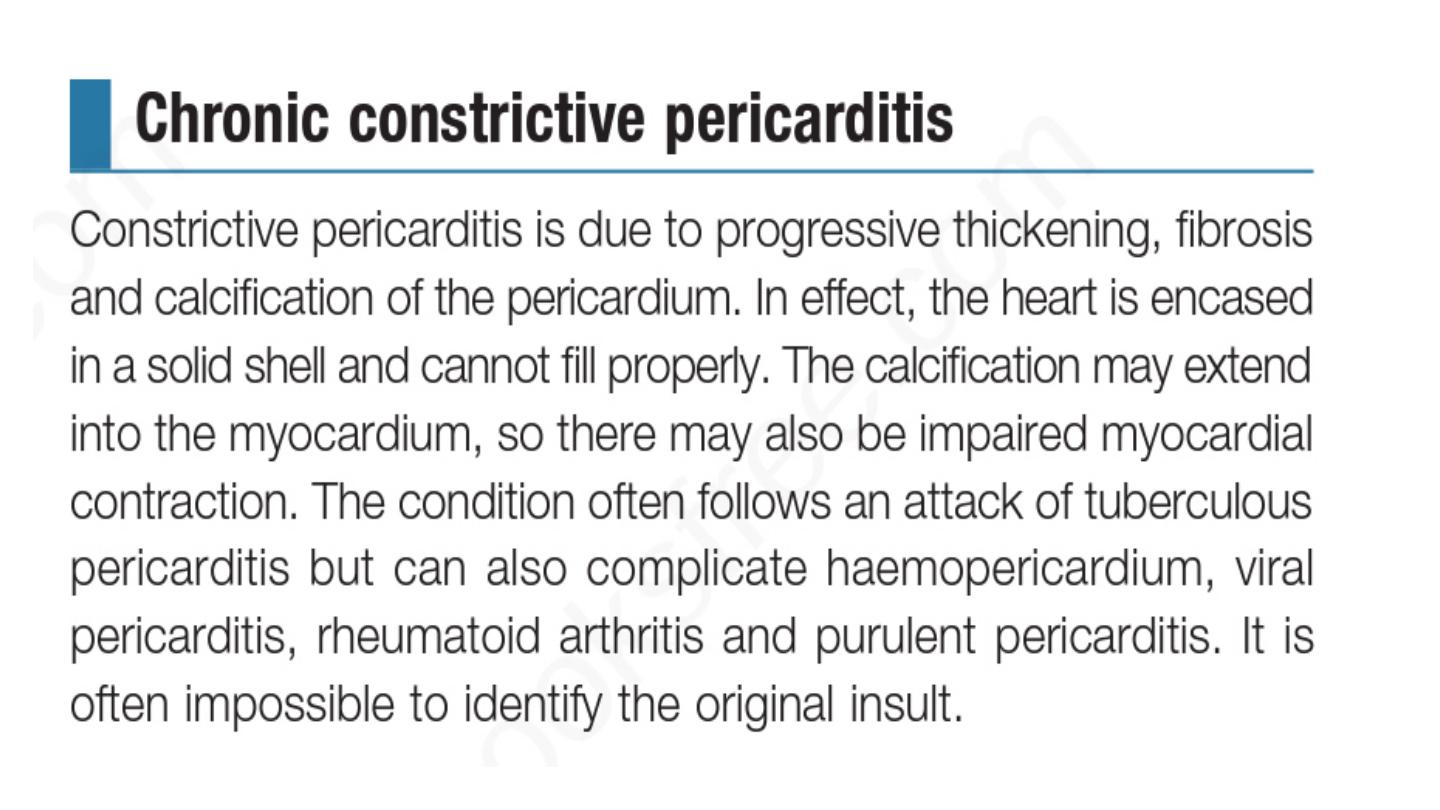
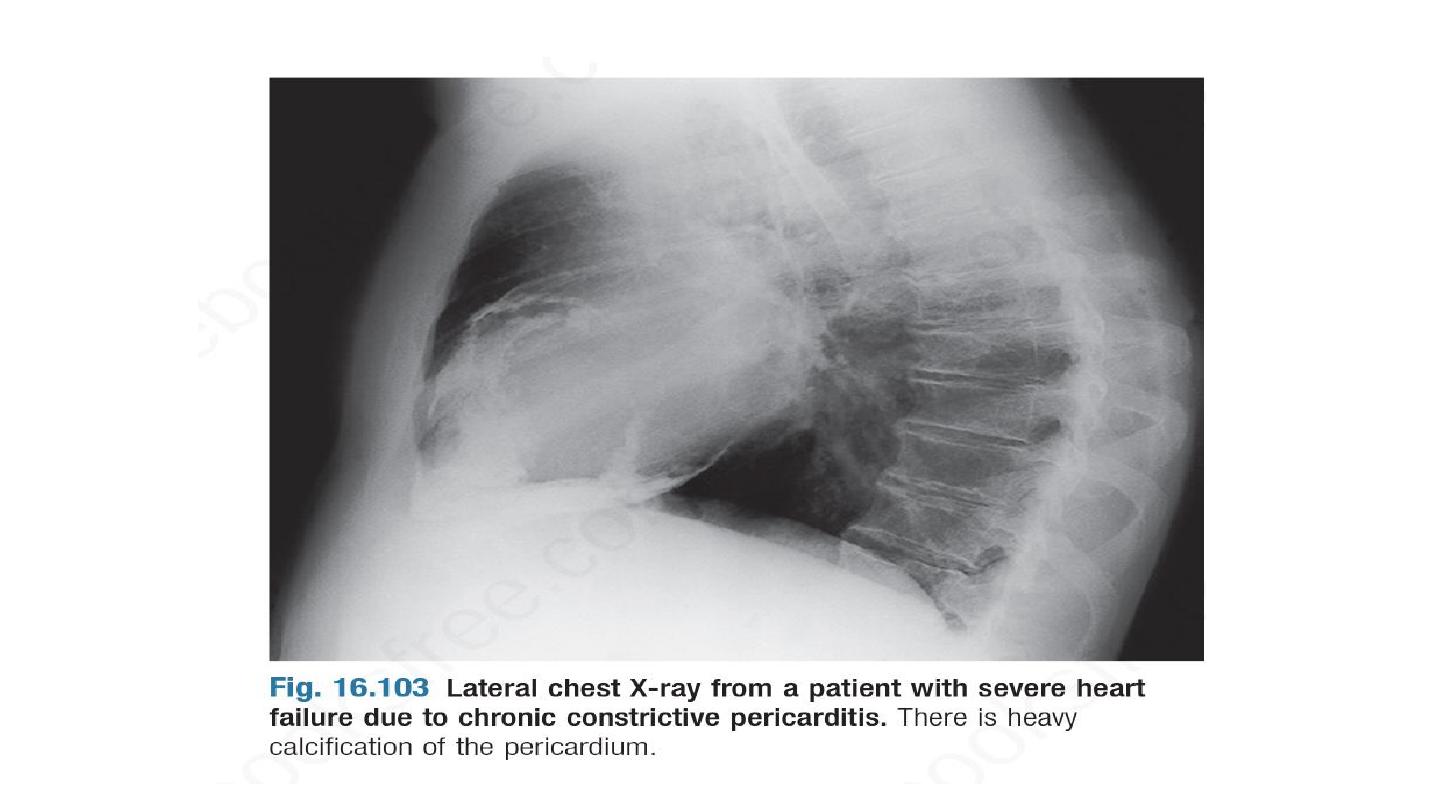
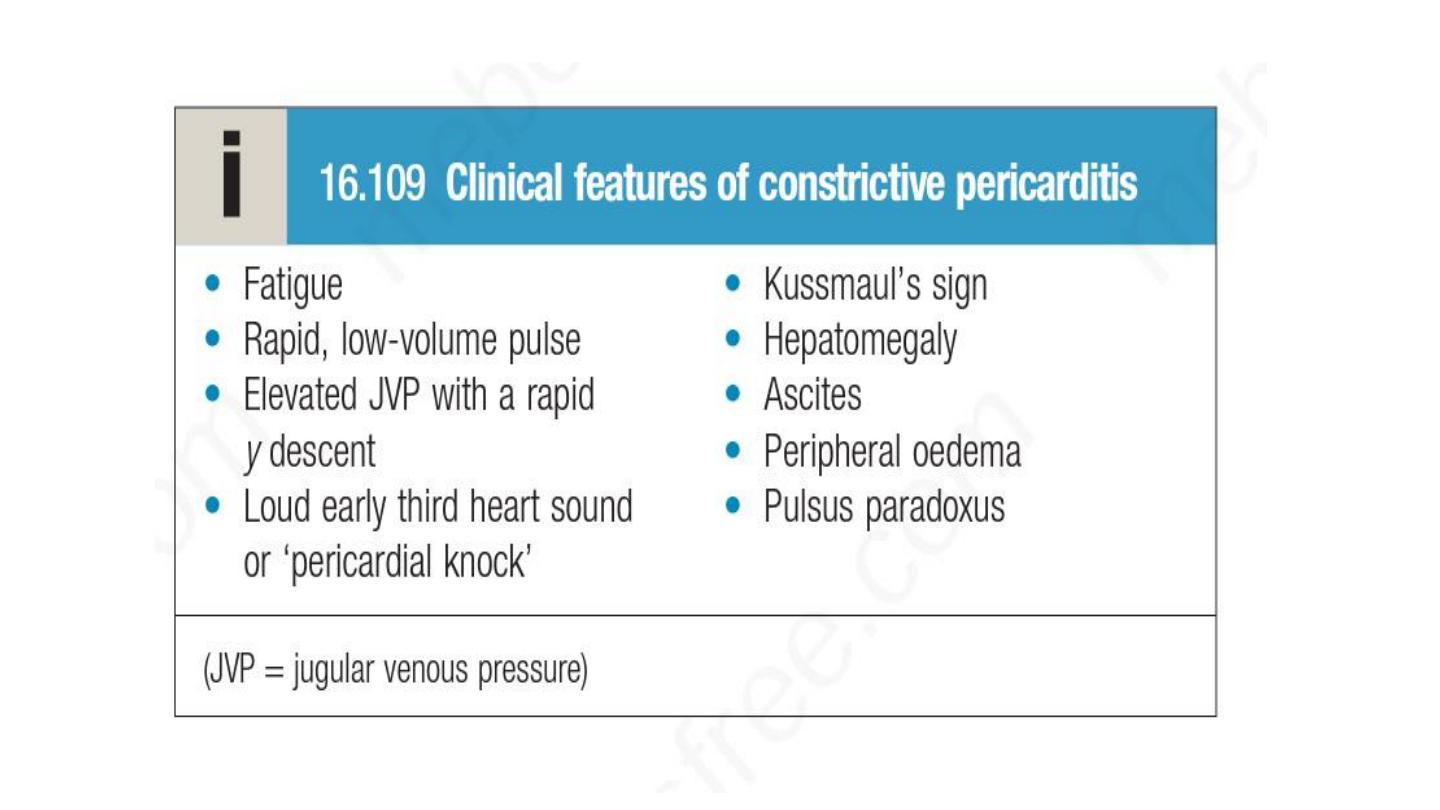

Management of constrictive pericarditis
